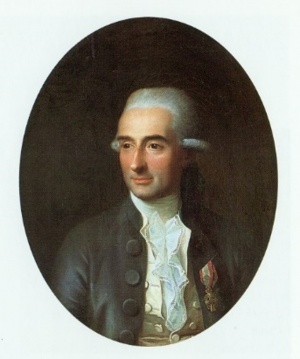Difference between revisions of "Peschier, Pierre"
| Line 35: | Line 35: | ||
'''Property'''<br /> | '''Property'''<br /> | ||
| − | Peschier owned the house that today houses the headquarters of Danske Bank at Holmens Kanal no. 12 in Copenhagen (BioLek III), the so-called "Peschiers Gård". | + | Peschier owned the house that today houses the headquarters of Danske Bank at Holmens Kanal no. 12 in Copenhagen (BioLek III), the so-called "Peschiers Gård". That means that at least in 1801, he would have had fellow merchant [[Schmidt, Albrecht Ludwig]] as his neighbour [http://ddd.dda.dk/kiplink1.htm (Census 1801 Copenhagen)] |
Peschier was generally acknowledged as a very talented merchant and traded both in grains and East Indian goods, specifically to Russia in the early days of his career (BioLek III) | Peschier was generally acknowledged as a very talented merchant and traded both in grains and East Indian goods, specifically to Russia in the early days of his career (BioLek III) | ||
Latest revision as of 03:26, 20 September 2018
Peschier, Pierre (1.11.1739-16.1.1812). Born in Geneva, died in Copenhagen. Buried at Assistens Kirkegård
Belonged to the French reformist church (BioLek III)
Family
Father: Peschier, Pierre 2
Mother: Blisson, Marguerite
Married to: Grodtschilling, Susanne Marie (14.9.1762 - 18.10.1816)
Timeline
1765-1768: Travels to Portugal, the Netherlands, England and France to learn the merchant business, in particular to learn more about the East Indian trade and trade goods (BioLek III)
1768: Came to Denmark at the request of Coninck, Frédéric de, and Peschier subsequently worked in de Conincks merchant house for some years (BioLek III)
1776: Granted citizenship (BioLek III)
1782: Correpondance between Peschier and the Amsterdam-based company House of Pye, Rich & Wilkieson about how Peschier has tried to use security placed in the hands of the Amsterdam company by House of de Coninck & Rejersen to purchase East Sea bonds/shares (called actions). House of Pye, Rich & Wilkieson was not happy to go forward with this as proposed by Peschier, and calls his original letter "inpertinent" and would like to not have any future correspondance with Peschier.
1799: Onset of difficulties for Peschier's business ventures (BioLek III)
1807-1812: Sold goods to the Basel based merchant house House of Christoph Burckhardt & Co. at a total value of 99710 livres (Fierz, 1994, 116-117)
1809: Appointed Knight of Dannebrog (Werner, 1927, p. 175). The newspaper Den Kongelige privilegerede Viborger Samler (1783-1839), lists a Pierre Peschier as "søofficer" this year, and as belonging to the 4th class (9th february 1809)
1810: Sold his estate on Holmens Canal no. 400 (The newspaper notice in: Kiøbenhavns Kongelig alene priviligerede Adresse-Contoirs Efterretninger (1759-1854), 6 june 1810)
1812: Died as a poor man as a result of various economic downturns (BioLek III)
Property
Peschier owned the house that today houses the headquarters of Danske Bank at Holmens Kanal no. 12 in Copenhagen (BioLek III), the so-called "Peschiers Gård". That means that at least in 1801, he would have had fellow merchant Schmidt, Albrecht Ludwig as his neighbour (Census 1801 Copenhagen)
Peschier was generally acknowledged as a very talented merchant and traded both in grains and East Indian goods, specifically to Russia in the early days of his career (BioLek III)
He purchased various goods at the Asiatic Company auctions through his lifetime (RA Moltke), and was considered the greatest customer of the Asiatic Company (BioLek III)
No account books for Peschiers merchant business survive. There is evidence of his business dealings with other European merchants (University of Bern)
